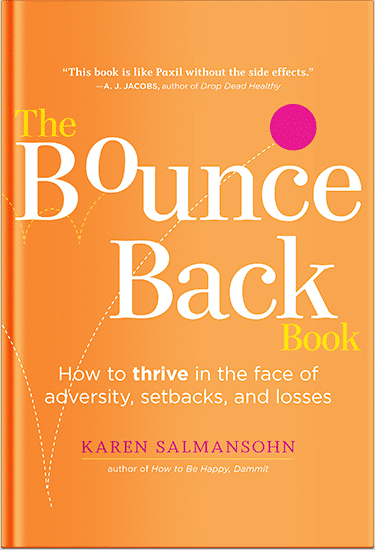 Hair loss doesn’t have to affect appearance alone. For others, it affects self-worth in relationships and workplaces. With improved treatments, many are receiving solutions sooner and with better results.
Hair loss doesn’t have to affect appearance alone. For others, it affects self-worth in relationships and workplaces. With improved treatments, many are receiving solutions sooner and with better results.
Regardless of whether you’re starting to see thinning or suffer from ongoing hair loss, there are now three best choices: exosome therapy, PRP (platelet-rich plasma), and hair transplants.
These procedures differ in how they are performed, how fast one can expect results, and just how invasive they are. No procedure is right for everyone, so it’s helpful to compare them simply. If you’re located in a city like Philadelphia or elsewhere, this piece will help you decide which procedure may be best for your lifestyle, wants, and needs.
Step 1: Understand What Each Treatment Does
Each method works differently, so it’s important to know the basics first. Exosome therapy uses lab-prepared particles called exosomes. These contain proteins and growth signals that help hair follicles repair and grow again. The treatment involves injecting them into the scalp to reactivate weak follicles.
PRP treatment involves using your own blood. After drawing a small amount, the blood is spun in a machine to separate the platelet-rich portion. That’s then injected into the scalp to trigger growth using your body’s own healing properties.
Hair transplants are surgical. They involve removing hair follicles from areas of thicker growth and relocating them to bald or thinning spots. This method redistributes your natural hair to where it’s needed most.
Each one serves a purpose. The key is to match the treatment to your stage of hair loss and your expectations.
Step 2: Match the Treatment to Your Hair Condition
The best results come from choosing a treatment that fits your current hair status. If your hair is just starting to thin or you’ve noticed mild shedding, PRP and exosome therapy may work well. These are both non-surgical and aim to improve thickness and density over time.
Hair transplants, on the other hand, are better suited for areas where hair is mostly or completely gone. They don’t restore follicle function—they move healthy ones from one place to another. Those exploring Exosome Treatment in Philadelphia often fall into the early-to-moderate hair loss category. Many provider in the area offers this option through a process that targets weak follicles with growth signals—no cutting, no downtime. Choosing the right option at the right stage is essential for real results.
Step 3: Think About Recovery and Procedure Type
Some people want the least invasive method possible. Others are open to surgery for long-term results. Understanding what each method involves can help you feel prepared.
Exosome and PRP treatments take less than an hour. You can usually go back to normal activities the same day. There may be minor tenderness, but no wounds or healing time.
Hair transplants take several hours and require recovery. You may need bandages, follow-up visits, and time off work. Some discomfort is expected as your scalp heals.
If you want a hands-off approach with no downtime, exosomes or PRP might suit you better. If you’re looking for permanent coverage in bald spots, a transplant may be the right fit.
Step 4: Think About Cost and Commitment
Cost is a consideration, but so is the frequency with which you will need to come in for treatment. PRP treatments and exosome treatments take several sessions, with months between them. Their cumulative cost over time varies, but it can depend on your response.
Hair transplants will cost more initially, but the outcome is supposed to be long-lasting. But if you have ongoing thinning of untreated areas, there will be follow-up procedures that will be necessary in the future.
Consider what you’re willing to spend—dollars and time. Some people are comfortable changing over time. Others want quicker, more dramatic results, even if that takes surgery.
Step 5: Think About Your Timeline and Expectations
Different treatments work on different timelines. PRP and exosomes take time to show results. You may see less shedding after a few weeks, but visible improvement usually appears in 3–6 months. Continued maintenance may be needed to keep progress steady.
Hair transplant results also take time. After surgery, the transplanted hair usually falls out before growing back stronger. Final results often appear after 6–12 months.
Be realistic about what you want. If your goal is to thicken existing hair or slow loss, non-surgical treatments may fit best. If you want to cover bald areas and have a lasting change, surgery may be the better match.
Conclusion
The right hair restoration method depends on your goals, stage of hair loss, and lifestyle. Comparing exosomes, PRP, and hair transplants helps you choose a path that feels right, not rushed.
Ready to take control of your hair health? Start with a consultation and find the approach that suits you best.
P.S. Before you zip off to your next Internet pit stop, check out these 2 game changers below - that could dramatically upscale your life.
1. Check Out My Book On Enjoying A Well-Lived Life: It’s called "Your To Die For Life: How to Maximize Joy and Minimize Regret Before Your Time Runs Out." Think of it as your life’s manual to cranking up the volume on joy, meaning, and connection. Learn more here.
2. Life Review Therapy - What if you could get a clear picture of where you are versus where you want to be, and find out exactly why you’re not there yet? That’s what Life Review Therapy is all about.. If you’re serious about transforming your life, let’s talk. Learn more HERE.
Think happier. Think calmer.
Think about subscribing for free weekly tools here.
No SPAM, ever! Read the Privacy Policy for more information.
One last step!
Please go to your inbox and click the confirmation link we just emailed you so you can start to get your free weekly NotSalmon Happiness Tools! Plus, you’ll immediately receive a chunklette of Karen’s bestselling Bounce Back Book!


 Hair loss doesn’t have to affect appearance alone. For others, it affects self-worth in relationships and workplaces. With improved treatments, many are receiving solutions sooner and with better results.
Hair loss doesn’t have to affect appearance alone. For others, it affects self-worth in relationships and workplaces. With improved treatments, many are receiving solutions sooner and with better results.